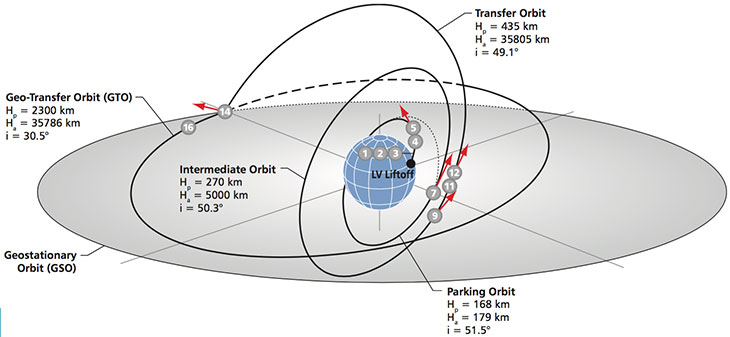Let me make a few comments here --all basic physics -- yet quite important for fundamental understanding. Hope this helps.
vina wrote:
Not sure what the accuracy needed for the satellite clocks ...
For instance, clocks sycnhronize over networks (including the clock on your computer and cell phones) to a great degree of accuracy. ...
The accuracy required (in both stable frequency and latency (wrt to "standard" TAI) is about MILLION times more than what is typical needed (or achieved) on a typical computer or a cell phone. So the NTP daemon running on server can get good enough time value from a reference server (which could be synchronized with an atomic clock). Your computer is okay as long as time drift is not more than (say) a few millisecond.. frequency stabilization of 1 part in 10^9 is much more than one needs). Clocks on sats are (and need to be) synchronized of the order of nano second or better .. with frequency stabilization of values -- typical 1 in 10^15.
(So typical Network time protocols - and time on your computer - does not produce that accuracy).
Typical value of Cs clock frequency is about 9 Ghz with stabilization up to
1 part in 10^14)
(*** side question *** then how does GPS on your cell phone work? if it does not have such an accurate clock ***? (I generally ask this question to test really top students to see if they can reason it out without looking up))
So why is it that when 3 "stratum 0" (or atomic clocks) go down, we start losing functionality in the Galileo cluster and also IRNSS ?...The network time doesn't obviously fail if 3 "stratum 0" clocks go down...
Again, if stratum 0 goes down the local clock on computer is good enough not to drift too much in a day or so .. (or till one makes contact with stratum 0 and adjusts the drift). in Galileo clusters.. you need accuracy *all* the time.. remember you have to broadcast those accurate time-signals all the time)
Wonder if such a synch scheme for all the clocks in the GPS satellites are good enough.
In practice there are about 400 **very** accurate atomic clocks distributed over the world with very sophisticated syntonization and *very* accurately known locations. These are taken as standard atomic time, and other clocks can be synchronized with this system.. ..(This is how atomic clocks on sats calibrate each other.. and this is how they come to know if some clocks are faulty).
In other words, if one GPS sat's clock becomes defective (of fails) one can do something but thats only because there are other sats clocks which are working and one is doing some checking back and forth.
Note, the GPS problem is , as long as all the clocks there are synched and "internally consistent" , i.e.,all clocks in the GPS satellite cluster says time is x.xxxxxxxx to whatever accuracy, while the "actual time" on a ground based "master clock" is x.xxxxxxy (say) , .
This is
not exactly true, as not only time but
also the position of sats calculated by ephemeris (calculating orbit with very high precision) comes into play.
For that one has to know the 'true time' to calculate the orbit.
****
"true ground time" (if such a thing exists , can it , philosophically?) is immaterial and even if it is material, if latency /lag between the two is known, you can actually back calculate the "True" time
As said before , and as you agree, "true ground time" is what people agree as "standard".. in practice there are a few standards
TAI (Atomic time - as said before, this is based on about 400 atomic clocks world wide)
UTC (UT1) - This is what radio stations, your cell phone, (civil time keepers) use-. UT1 is based on earth' spin (and since earth's spin changes a little) it differ a little from TAI - and when difference accumulates to about 1 second a leap second is added etc.... Your cellphone gps etc knows how to convert UTC to TAI etc..
ET (ephemeris time) was standard before Atomic time -- based upon gravity/orbits of earth and planets... it is in sync with TAI (difference < 1 ns).
(And yes the detailed records of latency are kept so one can convert from UTC to TAI)
your GPS devices (like say the Garmin handheld, or the GPS chip on the cell phone) that work on time delay of arrival should work fine .. they are after all calculating based on the time as on the satellite, whether that satellite time matches
Actually your Garmin or GPS on cellphone's clock is not synched with satellite.. in fact there is not even a very precise clock there..

)
So let me post my question again - if you have not heard this question before --- How does GPS on a cell phone can get your position even though it does not have an atomic clock??

